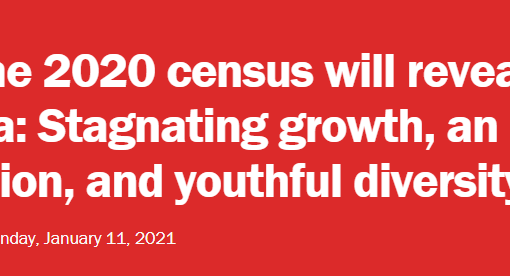An Editorial in the Savannah Morning News August 30,2020
By Robert Pawlicki
I know of no white person who looks in the mirror and thinks of his or her skin color. No white parents must give their children “the talk,” the conversation about what they must face and do if stopped by the police.
These are different life experiences between the races in America. But Blacks face more than daily slights and indignities. They face challenges that are baked into the system, largely unseen and dismissed or ignored by the majority white population.
Institutional racism has a long and storied history. A classic example is the G.I. Bill. Revered as a signature legislation of America’s greatness, the law rewarded our military after World War II and stimulated the country’s economy to unprecedented heights – that is, for white Americans. Black Americans were excluded. The G.I. Bill benefits of going to college or buying a starter home were simply not available to black military families.
Generations later, many of the descendants of white parents who received the G.I. Bill, along with its accompanying economic consequences and freedoms, are unaware of the advantage their lives have had compared with their Black counterparts. Entire generations of Black Americans were left behind, and their children were consequently more likely saddled in poverty.
Institutional racism is simply invisible for too many whites because it doesn’t affect them.
Exclusion from the G.I. Bill is just one example, but it followed a long history. The New Deal loans, relief and insurance programs during the Roosevelt era often specifically excluded Black people. The list of such atrocities is long.
A long fight for freedom
For many white Americans, the thought of Black freedoms and rights are relegated to the time of the Civil War. Blacks were freed in the emancipation proclamations in 1863. In actuality, Blacks did not gain their freedom in 1863, at least not in a manner that whites would consider freedom.
It’s true that former slaves did experience a taste of freedom when Blacks were voted into office at an unprecedented rate in the 1860s. But that power was not tolerated by the dominant white population who then quickly struck back once federal troops left the South. They responded by limiting voting rights and created an avalanche of restrictions that reconfigured slavery into a different cloth.
Among the most pernicious was the Black Code, a system that dominated large swaths of the South for generations. New laws allowed local authorities to arrest freed Blacks for vagrancy if they were caught not working during working hours. This and other minor infractions, subjectively enforced, committed them to involuntary labor.
Those arrested became assets to be transferred into contractual bondage to farmers who paid law authorities for their supply of chattel workers. Black men, in their new form of slavery, then basically lived under the complete control of their “owners.” The life span of those men caught in this devilishly immoral system was short. The Black Code lasted generations before Blacks saw any progress.
Today, whites talk about “pulling yourself up by your bootstraps.” Yet keeping Blacks in their place was a national pastime during the early part of last century. “Don’t get too uppity” was the mantra.
It comes as a shock to most white Americans who are learning, for the first time, how a prosperous Black enclave in Tulsa, Okla., was literally wiped out by its white citizens. The massacre started as a result of a racial incident but is widely believed to be caused by resentment of wealth and privilege of an affluent Black community. That indignity and rage resulted in the burning of 1,200 Black-owned homes, amazingly including the dropping of firebombs from private aircraft. Over 300 people were killed and an estimated 8,000 Blacks were left homeless.
The horror did not end there. It was followed with the internment of 6,000 Black residents in stockades, only released if a white citizen vouched for them. Once released, Blacks were then required to wear a green identification patch as evidence of their permissibility to walk free.
It’s worth noting that Tulsa, a city of 72,000 in 1921, had 3,200 Klu Klux Klan members by one estimate. That was not unusual. In the 1920s, the Klan claimed 3 to 5 million members, enough to enable 50,000 robed Klansman to march in Washington, D.C. Nor does the story stop there. Houston, Chicago, Omaha and other cities, often with Klan support, had race riots during this period.
Historically hiding the distress of the Black community has been a well-established practice. That pattern was an underlying reason that Mamie Till Bradley displayed her murdered 14-year-old son, Emmett Till, in an open casket in 1955. Emmett, visiting relatives in Mississippi, was accused of offending a white woman in her family’s grocery store, thereby violating the strictures of conduct for an African-American male interacting with a white woman in the Jim Crow-era South.
Shortly thereafter he was abducted from his home, beaten, mutilated, shot in the head, and his body sunken in the Tallahatchie river. Three days later, Till’s body was discovered, retrieved and sent to Chicago.
Emmett Till’s mother courageously insisted on a public funeral service with an open casket, to expose the world to more than her son’s bloated, mutilated body. She wished to draw attention to the brutality of U.S. racism. The picture of Emmett’s body, so grotesquely mutilated, was broadcast across national newspapers, creating a temporary firestorm of upset. Then the distress subsided, and racism returned to normal.
It has been hard for many whites to keep the distress of the Black community in mind for long. Blacks speak of the obstacles they face, barriers not faced by their white counterparts but, for the most part, whites can’t or don’t hear. Our stories are happier. Their stories are painful. Their stories are inconvenient.
For the most part, white citizens do acknowledge some institutional racism in the past: segregated schools, the prohibition to eat at the corner pharmacy, use of public restrooms, public fountains and community swimming pools. But they are often considered to be injustices not of their doing.
“Get over it” is a not uncommon refrain heard in white company, implying that those problems have been solved. “Time to move on.” But, of course, the problems were not solved. They merely morph into new iterations.
Institutional racism lives on
In the lifetime of older Americans, the civil rights legislation of the 1960s appeared to be a turning point. But it, too, had a backlash in institutional racism for decades after. Prejudicial laws, policies and practices rose their heads once again, but often in obscure ways that effectively hid the overt intent and allowed for rationalization. The rise of mass incarceration, beginning in the 1970s, is a prime example.
Incarceration rates for Black men are six times higher than those of white men. The American jail and prison system imprisons a larger percentage of its Black population than South Africa at the height of apartheid — this, during a period in which crime rates have decreased.
Health care, or lack of it, is another example. While virtually every other developed country has adopted a national health care system that includes their minorities, the United States has resisted, delegating the decisions to states.
While individual rights are professed as the primary motivation for such action, an underlying role of racism likely plays a role — an assertion that will evoke intense denial. Nevertheless, the greatest resistance to national health care comes from those portions of our society most linked to lingering institutional racism.
Lack of health care or diminished benefits plays an outsized role in the daily lives of Black Americans. From the quality of health care, choice of jobs, the fragility of their financial base, access to grocery stores near their homes, and more, the policies and practices of our nation are a prime example of institutional racism. Getting sick in America is simply enormously more dangerous if you are Black than white.
That institutional or structured racism has worked to adversely affect Blacks can hardly be disputed. The effects are pervasive and profound. The gap between white and Black Americans is ubiquitous and deep. Unemployment rates are consistently twice as high among Blacks as whites. Blacks live an average of three and one-half fewer years. The median household income for whites is $82,000 and $53,000 for Blacks, while home ownership rates stand at 42% for Blacks and 73% for whites. And glaringly, 2,272 Blacks are imprisoned per 100,000 citizens while 392 whites are so.
One-hundred and twenty-seven years ago, Frederick Douglass, speaking at the World’s Fair in Chicago, said, “Men talk of the Negro problem, there is no Negro problem.” With his voice rising, he continued, “The problem is whether the American people have loyalty enough, honor enough, patriotism enough, to live up to their own Constitution.”
From a Black American’s viewpoint, slavery has never fully disappeared. It has instead morphed into a subtle subjugation with token exceptions. Unless white Americans see what they thus far have been unable to see, we will never fulfill the American dream.
Robert Pawlicki is a semi-retired psychologist and a Savannah resident.





